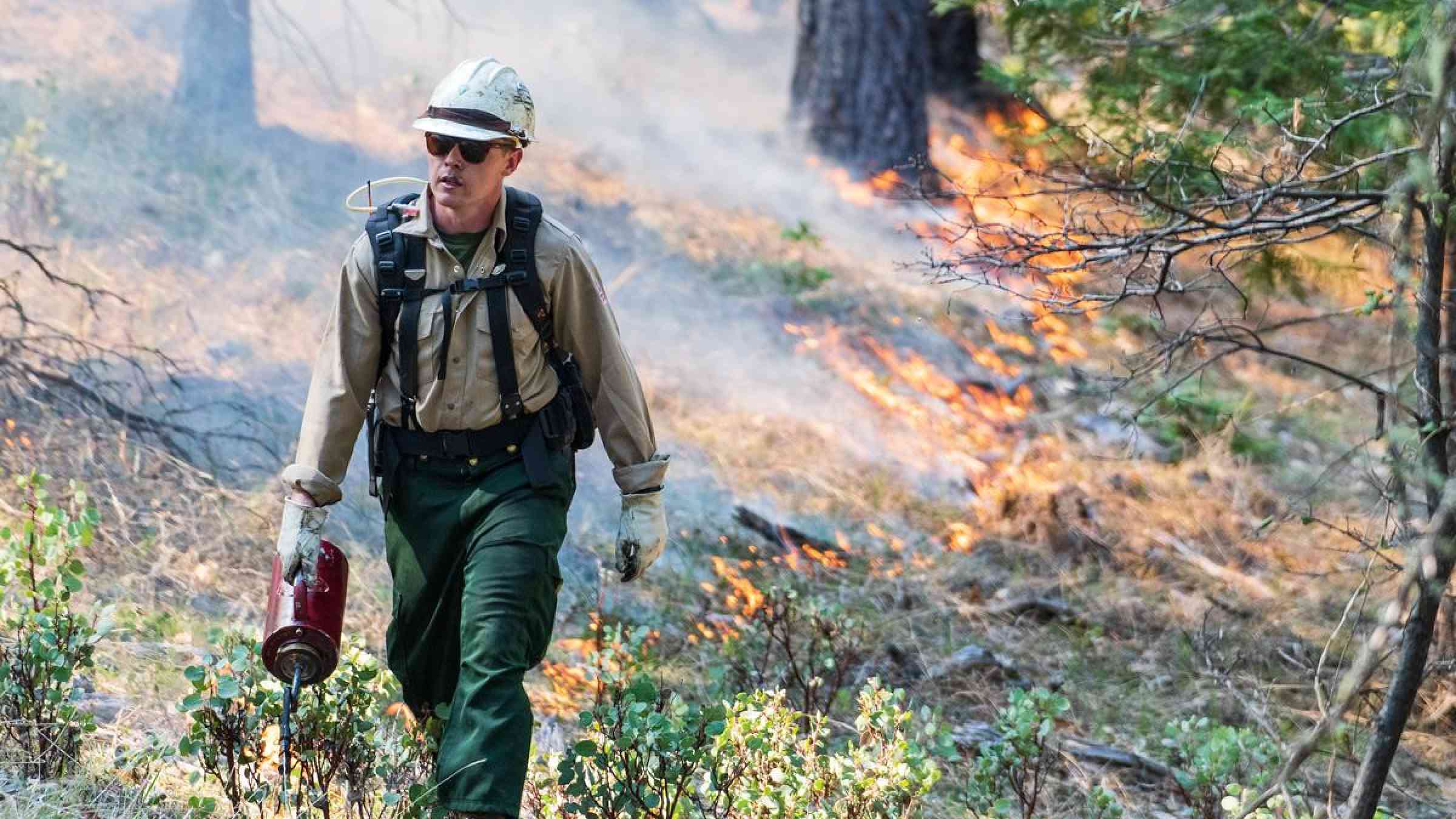Giving power to communities for fire resilience

Cordi Craig is the Prescribed Fire Program Manager for the Placer Resource Conservation District in Placer County, California. Previously, she worked as a wildland firefighter for the US Forest Service in Colorado and Nevada and has a degree in Natural Resources and Environmental Science from the University of Nevada – Reno. Earlier this summer, FAC Net’s Membership and Communications Coordinator Annie Leverich sat down with Cordi to talk more about her background and the experience she brings to her role, as well as some of the exciting projects the Placer RCD is working on to advance fire resiliency and awareness in the area.
Can you describe your position now, and what led you here?
CORDI: I am standing on the shoulders of giants here in Placer County. As the Prescribed Fire Program Manager at Placer RCD, I’ve received mentorship from incredible people within and outside the county. I work directly with private landowners to teach them how to safely use prescribed fire as a land management tool for wildfire resilience and ecological benefit. I also manage the Placer Prescribed Burn Association (Placer PBA) – offering training, demonstration burns, and encouraging landowners to take management into their own hands.
Before working for Placer RCD, I went to school at the University of Nevada – Reno, where smoke from California fires would sit in the valley for what felt like the entire summer. After I graduated, I applied to become a wildland firefighter because I wanted to be a part of the solution. I was fortunate to land a position with the Humboldt-Toiyabe National Forest. I loved the job and my crew, but more often than not, we were left mopping up a large, black spot. I realized that transitioning to the prevention side would give me an opportunity to mitigate wildfire behavior before ignition.
What are some recent successes in your work?
After speaking with Placer County residents, we found that the majority of private landowners were very supportive of prescribed fire, but cited lacking the knowledge, skills, or confidence to implement on their own. In response, the RCD developed a prescribed fire education program with the assistance of an experienced and skilled community member, in which we combine classroom education with boots-on-the-ground training.
After quantifying our results, we are excited to share the larger impact of our education program. This past season, we hosted eight Rx Fire 101 Workshops throughout the Sierra Nevada (Placer, El Dorado, and Tuolumne Counties). We combined our classroom workshops with 18 training burns. Although our training burns were small and cumulatively achieved just 25 acres, we trained community members and successfully equipped them with the knowledge, skills, and confidence to implement on their own. We distributed a questionnaire in June, requesting landowners who attended the training to report their achievements. A total of 47 landowners implemented more than 260 acres of broadcast burning – most of whom reported having very little to no previous fire experience before attending the training. The average burn unit size was 5.9 acres and there were no reports of escapes, injuries, or financial damages. Check out our web map to see all the locations of landowner burns throughout the Sierra Nevada.
Tell us more about the partnerships you’ve forged within your work.
I have been fortunate to work with incredible people, leaders, and do-ers, all working towards the shared goal of protecting the places we live, work, and play. Particularly through the Placer PBA, I work closely with folks from local, state, and federal agencies, Tribes, nonprofits, and private landowners. In particular, we are excited to be teaming up with United Auburn Indian Community and Todds Valley Consolidated Tribe to weave together our work with cultural and prescribed fire for a shared goal of forest stewardship.
What’s your vision for fire adapted communities? What are the biggest challenges to getting there?
I think that eventually everybody will see prescribed fire as just a tool – like a car. Tools need to be operated safely, and training and practice are necessary, but it’s fairly accessible, particularly in rural communities. Who did you learn to drive a car from? Did you depend on the DMV to teach you? Or was it your older brother, the neighbor across the street, Grandma? Did you start small in an open parking lot or immediately drive 80 mph on the highway?
I think learning to use prescribed fire is similar – you don’t start off burning hundreds of acres. I believe our success in achieving fire resilience is inextricably tied to community support. A fire-adapted community is one in which fire resilience is directly woven into everything we do. One of our biggest challenges is rebuilding our relationship with fire after a long-term marketing campaign demonizing it. In particular, many people have suffered traumatic and devastating experiences with fire. Humans are a reactive species and rebuilding a safe relationship borne out of fear can be challenging, but with time, exposure, and involvement from all walks of life, this vision is achievable.
What advice would you give someone hoping to develop more community burning opportunities in their place?
I have lots of advice because I’ve made a lot of mistakes! But it all comes down to building relationships. Find your yes people, ask questions, and just do it. When I’ve had successful burns, I can directly tie them to my support system and a team of people who made it happen. The amount of knowledge in our communities is incredible: retired firefighters, Tribal citizens, long-term landowners, and motivated volunteers. Creating a fire-adapted community requires all of us.
Building wildfire resilience in California is like eating an elephant. It is a huge undertaking and can only happen one bite at a time. Although our achievements this season are just a drop in the bucket, it demonstrates that education leads to landscape-scale implementation.
How do we burn a million acres? By training a million landowners to burn one acre.